Mixing genres in DJ sets
How to DJ multiple genres in one set
As a DJ you’ll absolutely definitely want and need to mix musical genres during a DJ set. Whether you’re DJing a wedding, private party, club or bar. There’s plenty of reasons to mix genres in your set.
Jumping from one genre to another can be a jarring experience for those enjoying your music. So how do pro DJs mix music genres so well?
This tutorial explores all you need to know about genre mixing in DJ sets and all the skills you’ll need to transition between music genres when DJing.
So let’s dive on in.
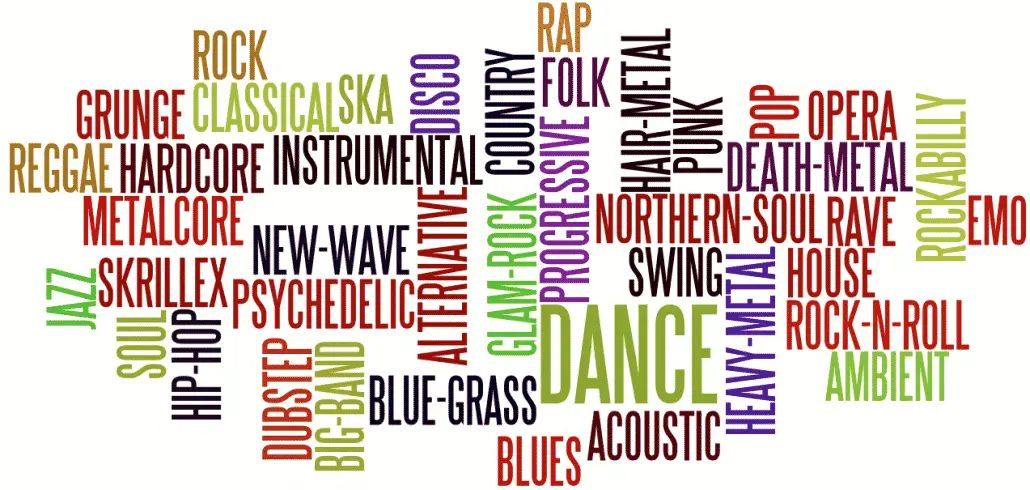
- Know which genres work well together
- What transition styles suit different genres
- Using hot-cues, cue points and loops to help mix your genres
- How to transition from one tempo to another
- Double time mixing genres
- Use acapellas and percussion loops
- Using effects to transition between genres
- Understanding energy levels of your music
Let’s start with a very important aspect of DJing genres within the same mix. Some genres of music work better together than others. So what works for some arrangements really won’t in other scenarios.
Generally speaking there’s some great pairings that work well and there are others to avoid. To keep things simple here’s a quick list you can use as a reference for your multi genre DJ mixes. All of these are tried and tested, working great together.
- Hip Hop and Drum & Bass
- Indie Rock & House
- Pop and mainstream Dance
While there are always exceptions to these and you can no doubt prove me wrong with some examples, for the most part these genres compliment each other the best. There’s clear reasons why this is the case too
Hip Hop and Drum & Bass
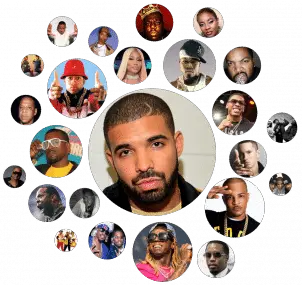 Let’s start with this easy one. Hip Hop is generally around 80-90 BPM while Drum & Bass is around 160 – 180 BPM. Can you see the obvious correlation here? Hip Hop tunes are half the tempo of Drum & Bass, allowing you to mix from one to the other fairly easily.
Let’s start with this easy one. Hip Hop is generally around 80-90 BPM while Drum & Bass is around 160 – 180 BPM. Can you see the obvious correlation here? Hip Hop tunes are half the tempo of Drum & Bass, allowing you to mix from one to the other fairly easily.
In fact it can sound amazing to convert your seemingly slow tempo hip hop rap track in to a thumping Drum & Bass classic with hard bassline!
One thing to not is that it usually works best going from Hip Hop to Drum & Bass as the tempo is speeding up. This increases the energy levels and hypes up your crowd. Going the other way will likely remove the energy from your DJ mix and may give some people the excuse to exit the dancefloor and go grab a drink.
Your DJ software may struggle with this doubling of tempo too so you’ll need to learn how to beatmatch if you want to pull this off successfully. The sync feature may not work as expected. We’ll have more on the technique of mixing in double time later.
Indie Rock & House music
 These 2 complement each other as their tempo is often around the same area. You’ll find plenty of Indie tracks that are around 120 BPM in fact there’s been an increase in indie rock bands using a more dance influenced style of percussion which lends itself to a BPM of around 115-125.
These 2 complement each other as their tempo is often around the same area. You’ll find plenty of Indie tracks that are around 120 BPM in fact there’s been an increase in indie rock bands using a more dance influenced style of percussion which lends itself to a BPM of around 115-125.
House tracks tend to have a useful lead in phase where you can transition in the thumping beats of your dance track while looping part of your indie track.
Indie music tends to have useful riffs that work well as loops, allowing you to go from house to indie and back to house with creative use of samples from the tracks. Catchy riffs looped over and over can work wonders with a heavy kick drum pattern.
Another obvious connection is that both genres of music are designed to dance to whether at festivals or concerts. So the phrases of the tracks are often quite similar. This allows you to get creative with their structure and find parts of 2 tracks that compliment each other well.
Here’s a fun mix worth checking out showing why indie rock and house go so well together.
https://www.youtube.com/watch?v=qfp–a7mBpo
Pop and mainstream Dance
Pop music can often be a tougher one to transition between as radio-edit style of quick changing musical arrangements can cause problems. Thankfully you’ll find that mainstream dance tracks employ the same tactic of short quick changes and big sounds that dominate the music.
There’s plenty of pop music tracks in the 100 – 125 BPM range as well. You may need to slow down your dance tracks a little and use the awesome advanced DJing technique of transitioning from one tempo to another. More on that later.
Again loops are your friend and help to extend an interesting part of the track that works best when transitioning to the new genre. We’ll have more on using loops in a later chapter too so keep reading!
Here’s a fantastic must watch video that shows you just how to mix pop tracks together.
Now that you know which genres work well together you need to know just what transitions styles do the best job of mixing those genres too.
While you may love to do long seamless mixes or get super squelchy with the effects, you’ll find that some of your favourite transitions really don’t work well with the genres you’re mixing together.
In fact some transition styles will ruin your gig if you try to use them when mixing genres in a DJ set.
So which genres work best with with DJ transitions? Let’s take a look at some genres and the transition styles I recommend you use. Let’s imaging these genres are the ones you’re transitioning in to, not out of.
Pop music
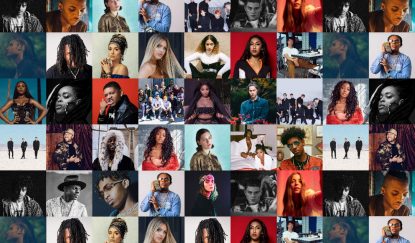 Due to the quick changing nature of pop music and the small amount of intro and outro time you get with them it’ll prove tough to do long seamless mixes here. Pop music is generally all about loud anthemic sounds that dominate the music, so the longer the mix the more this is going to clash.
Due to the quick changing nature of pop music and the small amount of intro and outro time you get with them it’ll prove tough to do long seamless mixes here. Pop music is generally all about loud anthemic sounds that dominate the music, so the longer the mix the more this is going to clash.
I highly recommend utilising quick cut mixes and short looped sections with effects.
Get in and get out quickly. Let the music do the talking rather than some over complicated mix.
A quick cut mix is exactly as it sounds. Count to the end of a 16 or 32 beat section and then press play and flick the cross-fader over to the new track. The beats will continue and your audience will keep dancing. They’ll also enjoy the nice suprise of that new song launching in with full effect. Sometimes it’s all you need to keep the dance floor filled.
Another option is to loop a short section of the track, preferably without vocals and quickly transition from the current genre to your pop track. People will no doubt instantly recognise the catchy pop track you’re looping and will appreciate your skills as a DJ as you bring in the loop and fade or filter out the previous genre.
Here’s a good example of cutting and chopping to switch tracks quickly
House Music
This one is pretty easy as DJing and dance music go hand in hand. Most house tracks have plenty of build up allowing you to seamlessly mix for long periods if you desire.
The genre you’re mixing out of will most likely have a very different percussion arrangement so the introduction of a solid 4 beat kick drum and high hat pattern will catch people’s attention. You can play on this and give them a little cheeky remix, turning that classic rock track in to a new dance music anthem!
Dance music is often filled with looping sounds and repetitive patterns. You can add to this by looping part of your outgoing music genre. This adds extra layers of recognisable sounds as you transition between the genres. creating a new house music style that can make the change between genres all the more palatable.
Here’s a fun 30 minute mix of house music, pop anthems and indie pop you might recognise, all blended together perfectly with some creative transitions thrown in. Could you do this?
Indie Rock music
Much like pop music, Indie rock tends to introduce sounds quickly and with dominant effect. Laying down their intentions early on with short periods of build up. This means you’ll need to act fast when transitioning from other musical genres.
Catchy riffs can work well looped here but don’t keep the mix going for too long. It’s best to get the transition over and done with within 32 beats maximum. I’d opt for 16 and use that overdriven riff that will soon dominate the mix to move from your previous tune quickly. Keep it going too long and it’ll just sound like a mess.
Hot cues are your friend here too. You could set a hot cue at the start of the vocals or a catchy riff and just cut mix from that point. Launching straight in to the new track with no need for beat matching and seamless mixing.
Here’s a great example of mixing indie rock and pop together during your genre blending DJ set.
Soul and Jazz
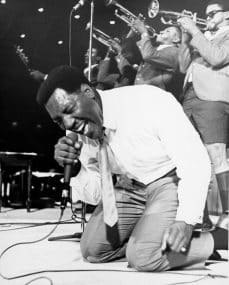 For the classics and even modern day grooves, I would recommend using some simple effects like filters to transition out of your previous genre and into a soul track.
For the classics and even modern day grooves, I would recommend using some simple effects like filters to transition out of your previous genre and into a soul track.
This type of music is all about the atmosphere and smooth style, so it’s likely whatever previous genre you were DJing with is going to clash if you try a long mix. At the very least the change of energy could be detrimental unless you get the mix right.
The easiest mix to perform here is beat matching with your currently playing track and simply using the filter effect on your mixer to reduce the sounds of the old track down to nothing more than a bassline. This will sound cool and add an interesting layer to the new soul or jazz sounds coming in.
You can then just fade out your old track and the job is done. I’d recommend you perform this DJ transition fairly quickly. Just 4 8 beats or 16 at a push if the two song’s sounds compliment each other.
Drum & Bass
With complex percussion and fat basslines, Drum & Bass tends to steer towards high energy dominant sounds from the get go. The percussion instruments are far from subtle and the bassline will soon take over, so you’d better be careful how you mix in to this.
The great thing is that Drum & Bass adds so much raw energy to a DJ set and as it’s a form of dance music it operates to the same 4×4 beat arrangement that house music does. So mixing between popular styles of music can work well.
You may need to adjust the tempo by quite a lot in order to seamlessly mix but if you key lock your deck and increase the tempo during your transition it can create an impressive mix that will catch people’s attention. More on transitioning between tempos in a later chapter!
This 40 minute mix might give you some inspiration showing you how pop songs and drum & bass tracks can work so well together.
Hip Hop
The great thing about Hip Hop music is that it’s mostly made up of looping samples. Whether that’s percussion, vocals or melodies, you can use these sounds to help you during your DJ transition.
Finding the sample that works best as a loop is the fun part. There’s usually plenty of options within hip hop tracks that will give you the perfect intro to work with. I recommend finding something people may recognise so the energy builds during your transition. People will be excited to hear the Hip Hop tune coming in and stay dancing even though you’ve entirely changed the genre.
The downside to Hip Hop is that it’s generally a different tempo than many other music genres. So long transitions will just sound weird if you’re forcing the track to be played at 120% speed. Keep your DJ transitions short and sweet. Just a few quick loops and then let the new track take over. Anything longer and it starts to get messy.
A demonstration
I highly recommend watching this demonstration of mixing multiple genres and just how creative you can get with your mix transitions.
 Life is so much easier with cue points and loops! If you haven’t set these up on all the tunes in your music library then you’re not a pro DJ!
Life is so much easier with cue points and loops! If you haven’t set these up on all the tunes in your music library then you’re not a pro DJ!
Hot cues AKA cue points are a method of assigning markers in your tracks you can instantly jump to.
When you’re jumping between genres and performing quick mixes these hot cues will make your DJ experience a stress-free one. Load your track, jump to the hot cue you want to use and perform you cut mix or quick transition mix.
Where to assign hot cues
So where exactly should you put your hot cues for best genre changing mixes. This can vary from track to track but my recommendation is the following phrases.
Start of the song. This is usually assigned automatically but it’s worth checking if the location is correct.
- Introduction of catchy riff. There’s often a riff before vocals, this is a great place to start from when cut mixing
- 4 beats before the vocals. This can be handy for that quick transition giving you a few beats to fade out the old track and jump in with the memorable vocals
- Start of a breakdown. Very useful for House, mainstream Dance and Drum & Bass tunes. That hands in the air moment everyone loves.
- A catchy loopable moment. You may find a few of these in the track that you can set loop hot cues for. Try short vocal samples or catchy riffs
- Loopable section near the end of the track. This is great for longer seamless mixes and making sure that you track is infinite while you’re trying to perform your transition
This is an awesome video from DJ Tech Tools on the best places to set hot cues on all of your music tracks. Check it out.
Loops
 As you may have noticed above, some of the hot cues are actually loopable sections that can make your DJ set all the more memorable, remixing live to your adoring crowd.
As you may have noticed above, some of the hot cues are actually loopable sections that can make your DJ set all the more memorable, remixing live to your adoring crowd.
You can usually set loop lengths anything from a quarter of a beat up to 32 beats long. Giving you plenty of options when it comes to sampling interesting sounds to get creative with, or simply giving you plenty of beats to transition over.
Loops are great but the most important thing to understand is how to exit your loops and let the track play. Whether people know it or not they’re expecting most musical genres to stick to the 4 bars of 4 beats. Every 16 beats things tend to change in modern music. So you’ll want to make sure you disable the loop and having something change when 16 beats is over.
You can of course perform shorter mixes but just remember enabling and disabling loops involves pushing more buttons at a critical time of your transition. You’ll want to practice this a lot to make sure you can pull it off with ease.
Here’s some handy cue loop tricks for Serato DJ Pro. Brought to you by the guys at Crossfader.
Prepare and Practice
I highly recommend assigning both hot cues and loops to all your tracks, and do this long before your gig. As a general rule you should spend some time adding them at the same time as importing the music to your library. So your tracks are ready to go when you need them.
Practicing is fun, so make sure you try out plenty of DJ transitions and options at home before performing them in front of a crowd. It’ll give you extra confidence during your gig and you’ll feel much more in control of the situation when it comes to moving all the dials, faders and buttons to transition perfectly from genre to genre.
Here’s some handy tips on preparing your music library for any DJ gig. Well worth watching.
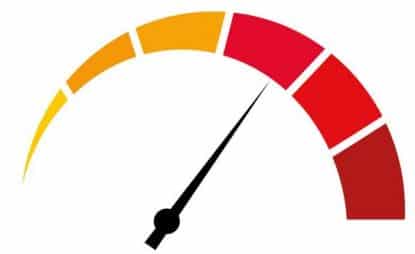 This will no doubt happen to you eventually when you find you just can’t beat match the two tracks together. Maybe someone insisting you play their favourite track next or you just want to get super creative
This will no doubt happen to you eventually when you find you just can’t beat match the two tracks together. Maybe someone insisting you play their favourite track next or you just want to get super creative
Either way you’ll want to learn how to best transition from one tempo to another in a seamless fashion.
For this you’ll need to use the sync button on your decks. Locking the tempos together. I recommend that your incoming track is faster than the outgoing, as this will add energy to your mix rather than reducing it.
Switch master tempo
Syncing the tempos will cause your incoming track to be slowed down to match the outgoing. Once you have this you’ll want to switch which deck is the master tempo over to your incoming track. Since this is the track you’ll want to return to it’s original tempo.
Use Key lock
Make sure the key lock is on too as the incoming track will sound very weird and probably put people off your DJ mix.
Fade in and speed up
Fade the incoming track in to your mix, preferably at a point where there’s only percussion. Once the two tracks are playing together you can increase the tempo of the incoming track. Because you’ve set this track to be the master tempo it will keep the outgoing track in sync and raise it’s tempo too.
Here’s an example I created to show you just how effective this can be. You can perform this kind of transition a lot quicker than I did but it shows just how awesome it can be.
You’ll hear both tracks speed up in perfect unity. So you can turn that mainstream dance anthem in to an epic drum and bass floor filler.. Or maybe that hip hop classic becomes a thumping house music masterpiece.
A word of warning
This doesn’t work well for all genres and all tracks. It’s best to explore at home before the gig and see what works. Create pairings and keep them in playlists so you can easily access them. Practice makes perfect and the more you prepare for your gig the better it will go.
Here’s a great example of changing tempo between hip hop and funk tracks. 90BPM to 130BPM. Watch for the full tutorial.
Another handy trick when DJing multiple genres is to double time the tempos to mix them seamlessly together.
Not sure what we mean? Here’s an example of this in action.
Everything I Am by Kanye West has a tempo of 80 beats per minute. A Hip Hop classic.
AfterGlow by Wilkinson is 174 beats per minute. A mainstream Drum & Bass hit.
You can see that AfterGlow is more than double the tempo of Kanye’s track. So you speed up “Everything I Am” by just 7 BPM and mix it perfectly with Afterglow.
Once you’ve beat matched them you’ll hear how the double time tempo of the drum and bass track completely transforms your hip hop track! Creating a very impressive mix that will wow your audience and really push the energy levels to new heights.
Problems with the sync function
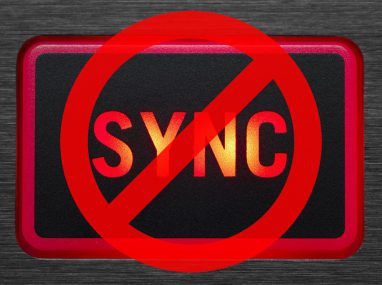 Whether or not you use the sync feature on your DJ controller is up to you, but you’ll no doubt find that some DJ software will not be able to easily match the two tracks together with the sync feature.
Whether or not you use the sync feature on your DJ controller is up to you, but you’ll no doubt find that some DJ software will not be able to easily match the two tracks together with the sync feature.
The problem is that DJ software is built to sync two similar tempo tracks together, adjusting the tempo slightly to get an exact match. Since the Drum & Bass track is twice as fast this may force your DJ software to try and double the pace of your Hip Hop track, causing major compression of the sounds and ruining the double time effect we’re trying to do here.
My advice is beat match manually. There’s plenty of visual cues in modern DJ software to help do this and you can easily calculate the BPM your incoming track needs to be by doubling the outgoing track’s tempo.
I always recommend you learn how to beat match manually and I’ve written a comprehensive article on the subject. DJ software can and will at some point let you down so it’s a great skill to have.
 There are plenty of other options when it comes to mixing genres in a DJ set. You don’t have to play the entire new track after all. It’s entirely possible to find acapellas of popular songs and mix those over other tracks.
There are plenty of other options when it comes to mixing genres in a DJ set. You don’t have to play the entire new track after all. It’s entirely possible to find acapellas of popular songs and mix those over other tracks.
This works especially well when you have an instrumental track. Think of the classic Kylie Minogue track “Can’t get you out of my head” as just the vocals. Mix that over a mainstream dance instrumental version of New Order’s “Blue Monday” and you’ve created a whole new song for people to love.
This is what’s known as mashups. Where you mash together acapellas and instrumentals to produce something new. It can work amazingly well and really capture the crowd you’re playing too.
Don’t believe me? Just check out that very mashup right here. An instant winner!
This obviously works well when coupled with the double time mixing explained in the previous chapter. In fact there are some famous remixes of pop ballad acapellas that have an 80 BPM tempo, mixed with a catchy Drum & Bass instrumental.
Adele’s beautiful “Hometown Glory” is a fantastic example of how well this can work. Take a listen.
DJ music pools often have an acapella section where you can download famous vocals and mix them live over your DJ sets. If you’re looking for more places and wondering where to download acapellas online then check out our article with full details.
DJ software often struggles to understand the BPM of acapellas since there’s no obvious kick drums to analyse the beat tempo. You may need to set this manually and make sure you have cue points in place to jump to the chorus or other vocals you could loop.
Again practice makes perfect when it comes to mixing musical genres with acapellas. Find out what works best for you before the gig and don’t leave it to chance.
Here’s one last wonderful mashup that will bring any wedding party to life and probably a few music festival DJ gigs too. Avicii Vs Rick Astley!
Percussion Loops
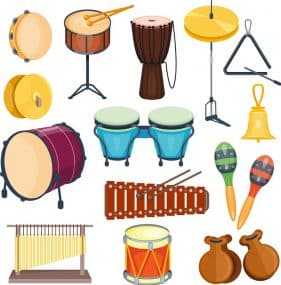 Another way to change the genre of tracks is through the clever use of percussion loops. These can be played at any tempo and can transform the way a song sounds.
Another way to change the genre of tracks is through the clever use of percussion loops. These can be played at any tempo and can transform the way a song sounds.
Imagine adding a latin samba beat and percussion style of a pop classic.
Or a complex old school rave percussion on your favourite indie rock track.
How would this change your perspective of that track? Would it switch the genre of it completely? Would it wow your audience?
There’s plenty of cool tricks you can do just by looping a percussion sample over your playing track. They’re even useful for transitioning seamlessly between genres, using the percussion loop as a bridge.
I love percussion loops and use them a lot of my DJ sets. They easily add a highly professional sound, creating something unique for my listeners. I love them so much I create a percussion loop pack you can download and use with full broadcast rights. Checkout my premium percussion loop pack here and full tutorial.
Try the free sample pack today and see how you can incorporate them in to your DJ set.
 There’s one thing all modern DJ software and hardware can handle and that’s effects. Adding a new twist on your DJ transitions and making mixing multiple genres even more enjoyable.
There’s one thing all modern DJ software and hardware can handle and that’s effects. Adding a new twist on your DJ transitions and making mixing multiple genres even more enjoyable.
Effects make for better mixes by blending sounds together and helping you transition out quickly from one genre to another.
There’s no need to just fade in the incoming track and fade out the outgoing. You can now add all sorts of effects like delay echos, reverb, filters, gating and a mixture of multiple effects you can customise too.
These can really enhance the transition and give you extra options.
Here’s a great example of what you can do with effects
- Bring in the incoming track using the filter effect to blend the sounds in to the outgoing track
- Add a little filter to the outgoing track to remove it’s dominance
- Add some delay echo or reverb to the outgoing track to blend the sounds in to the background
- Up the reverb and and filter until the sound appears to melt away
This is a simple trick that can add so much more to the transition process than just changing volumes or frequencies. The delay effect is usually synced to the master BPM too so the echoing will remain perfectly in time with your music.
You can also try effects like beatmashing that break up the outgoing track and repeat sections in interesting patterns. Instantly remixing our outgoing track. This can work well for indie rock or pop tracks that you’re mixing in to Dance music or Drum & Bass tracks.
Have a play around with all the effects you have in your DJ software. See what you can use to create quick easy creative DJ transitions for multiple genres.
Here’s 7 interesting transitions that use effects and frequency volume changes.
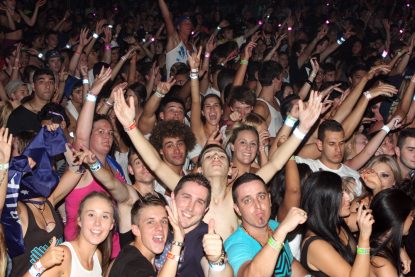 One of the major things that happens when you’re mixing multiple genres is that energy levels in the room will almost certainly change.
One of the major things that happens when you’re mixing multiple genres is that energy levels in the room will almost certainly change.
- Pop songs are considered happy
- Indie rock is usually more serious
- Dance music more intense
- Hip Hop music more inclusive
There’s lots of ways different tracks in different musical genres affect the mood of the room. So if you’re DJing from one genre to another you need to be aware of what might happen to your dance floor.
- Is the energy level going to increase?
- Will the suddenly change in music type cause a mass evacuation of the dance floor?
- Will people sing along and coax their friends to the floor too?
- Or will the jarring genre switch cause them to think more about taking a break and grabbing a drink?
It’s up to you to understand what could be about to happen and how your DJ mix will affect things. This is where knowing your music library well can really help you. Picking the right track for the right time of your gig and understanding whether it’ll add energy to the crowd, or take it away. Or possibly even add too much energy and tire people out!
There’s a lot to consider here and for the sake of your gig and your audience’s enjoyment it’s important to get this right.
As a general rule it’s wise to increase the tempo and energy levels rather than slow things down. You can do this by starting with lower tempo hip hop and pop, working up to dance and eventually drum and bass if it suits your crowd.
It’s easy to reset this too by using the double time mix in reverse.
Here’s a great video on maintaining energy levels especially at multiple genre DJ gigs like weddings and other private parties.
You can find an 80BPM track to transition to from your up-tempo 160BPM track.
Again this isn’t a strict rule, you can always play around with the genres and find high energy slower tracks that will work well after faster tracks.
Every track has it’s own energy level. It’s up to you as a DJ to understand what that level is and how it’ll affect the crowd when mixed in from the currently playing track.
This is quite an artform and is one of the most important jobs of any DJ. Knowing what will work next.
Before you go I highly recommend watching this video with some extra useful tips and tricks for DJing different genres together in one mix.
DJing help and advice
We’ll be adding more advanced DJ tips and tricks soon so be sure to sign up to the newsletter.
There are plenty of other ways to improve your DJ skills, check out these articles.
